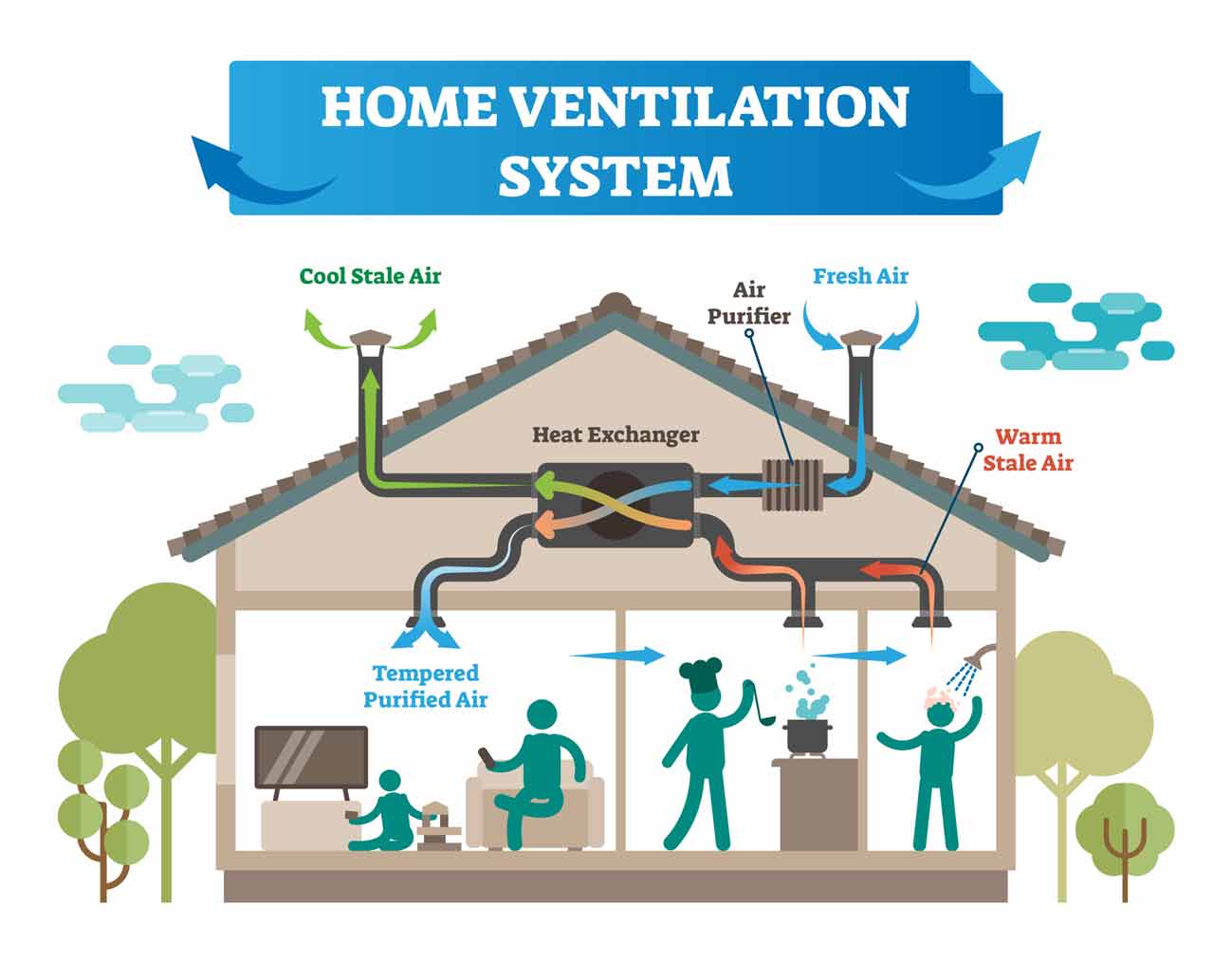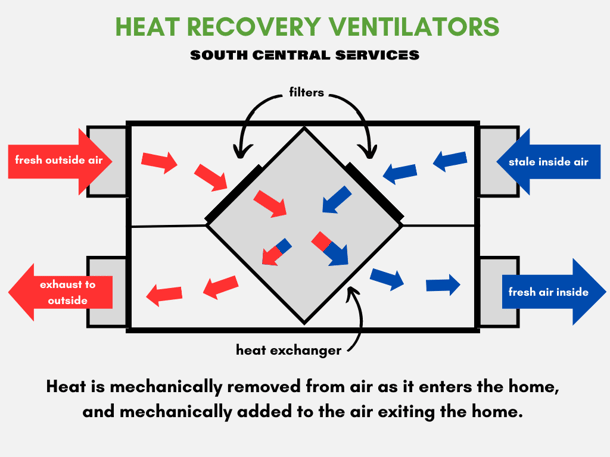Exploring the Advantages of Heat Recovery Ventilation for Power Performance in Homes
Heat Recovery Ventilation (HRV) systems provide home owners a functional approach to boosting energy performance. By reclaiming warmth from outgoing air, these systems can substantially minimize heating and air conditioning costs. In addition, they offer a steady supply of fresh air, boosting interior air top quality and convenience levels. As house owners take into consideration lasting options, recognizing the subtleties of HRV systems becomes significantly crucial. What elements should one review prior to making such an investment?
Comprehending Heat Recovery Ventilation Systems

Just How HRV Enhances Indoor Air Top Quality

Power Savings: The Economic Benefits of HRV
Making best use of energy effectiveness, heat recovery ventilation (HRV) systems provide significant economic advantages for home owners. By recouping and recycling heat from exhaust air, HRVs noticeably lower cooling and heating costs. additional resources This innovation can bring about energy financial savings of as much as 30%, depending upon climate and usage patterns. Property owners usually see minimized utility expenses shortly after installment, making HRVs a financially smart investment gradually. Additionally, lots of regions supply incentives or discounts for energy-efficient upgrades, better improving the monetary appeal. As power costs continue to rise, the cost-effectiveness of HRVs comes to be progressively clear. Overall, the consolidation of HRV systems not just advertises energy efficiency however additionally adds to lasting financial cost savings for homes.
The Ecological Effect of Heat Recovery Ventilation
A significant ecological advantage of heat recovery ventilation (HRV) systems depends on their capacity to decrease total energy intake. By reclaiming heat from exhaust air and transferring it to inbound fresh air, HRV systems decrease the demand for energy-intensive home heating and cooling techniques. This reduction in power demand adds to lower greenhouse gas discharges, as much less fossil gas is required to keep comfortable interior temperatures. In addition, HRV systems improve blog here indoor air top quality by efficiently exchanging stagnant air with fresh outside air, decreasing dependence on mechanical cooling systems that can harm the environment. Overall, the execution of HRV systems supports lasting living techniques and lines up with global efforts to deal with climate adjustment by promoting power efficiency in household settings.
Selecting the Right HRV System for Your Home
Exactly how can property owners guarantee they pick the best heat recovery ventilation (HRV) system for their needs? Initially, they should analyze their home's dimension and layout, as these aspects influence air movement needs. Next, assessing the system's performance ratings is essential, as higher scores indicate better efficiency and power cost savings. Homeowners must also take into consideration setup and upkeep expenses, contrasting various brand names and versions for value. In addition, it is essential to review noise levels, as some systems run more silently than others. Consulting with heating and cooling specialists can supply tailored recommendations based on details home problems. Ultimately, checking out individual testimonials and guarantees can assist in making an educated decision, making sure that the picked HRV system successfully enhances indoor air quality and power efficiency.
Frequently Asked Questions

Exactly how Commonly Should I Clean or Preserve My HRV System?
The frequency of cleaning or keeping a heat healing air flow (HRV) system typically depends on use and environmental elements. Usually, it is recommended to carry out upkeep every six months to ensure peak efficiency and air top quality.

Can HRV Systems Help Minimize Humidity Degrees Inside Your Home?
HRV systems can properly lower interior moisture degrees by trading stagnant, damp air with fresh, additional hints drier air from outside. HRV Heat Recovery Ventilation. This process assists maintain a well balanced interior environment, enhancing comfort and stopping moisture-related issues
What Is the Lifespan of a Common HRV System?
The life-span of a common heat recovery ventilation (HRV) system varies, usually lasting between 10 to 15 years. Regular maintenance can prolong its performance and operational life, ensuring peak efficiency throughout its use period.
Are There Any Type Of Sound Interest In HRV Systems?
Sound worry about HRV systems can occur, especially from fan procedure. Lots of modern units are developed to minimize sound degrees, guaranteeing they operate quietly while preserving efficiency, which addresses prospective disruptions in living atmospheres.
Can I Mount an HRV System Myself, or Do I Need an Expert?
The private contemplated whether to set up the heat recovery ventilation (HRV) system directly or hire a specialist. Typically, while do it yourself setup is feasible, proficiency guarantees correct performance and conformity with local structure codes, improving system efficiency.